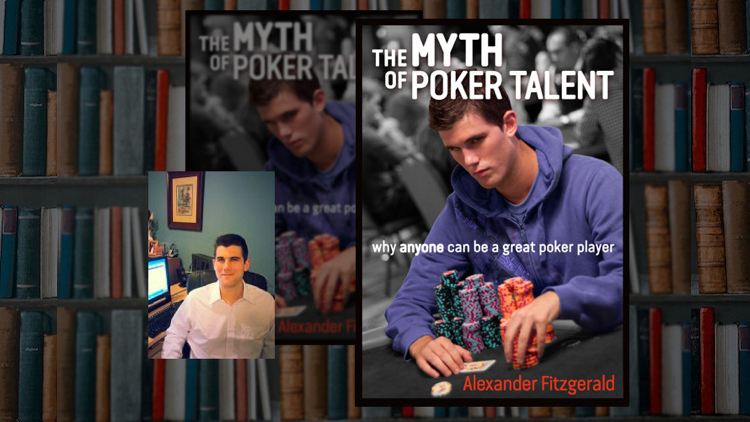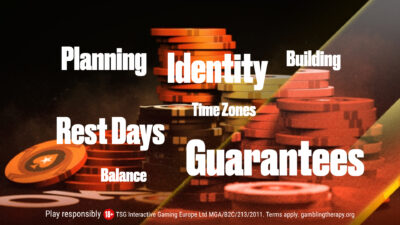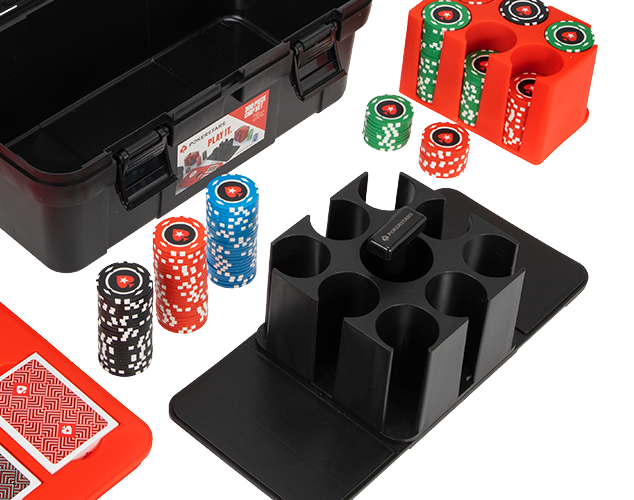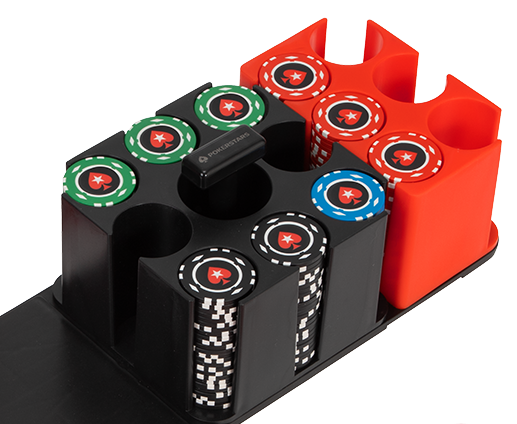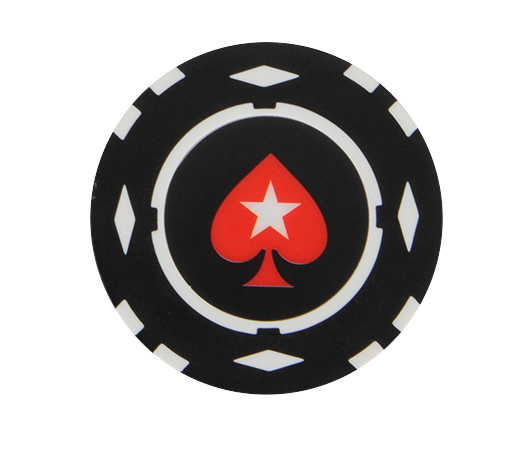An excerpt from Alexander Fitzgerald’s The Myth of Poker Talent in which the poker pro examines a preflop spot with a short stack in which he weighs the merits of jamming versus seeing a flop.
As the title The Myth of Poker Talent suggests, one of Fitzgerald’s primary goals is to explode the idea that it is impossible to win at poker without possessing some deep reservoir of innate talent from which to draw.
Rather, Fitzgerald believes that through study and hard work, anyone can be a successful poker player. His book provides readers a solid understanding of frequently faced, generic poker situations broken down and discussed in easy-to-follow, accessible language.
The following excerpt comes from the chapter “Preflop 3-betting and 4-betting” and finds Fitzgerald analyzing a hand to show why sometimes there may be more nuanced ways to play a relatively short stack than simply open-jamming preflop.
from “Preflop 3-betting and 4-betting”
Stop and go plays do actually have merit, despite their antiquated origins. A more interesting subject is if they can replace the typical re-jam. Let’s take a hand I played heads-up in a recent tournament. I had 16 BBs in the big blind. The button raised to 2x and I moved all-in, as I’ve done my entire life. The villain’s opening range is a little odder to express in CardRunners EV, because we assume it’s a bit more polarized. He’s likely raising/folding with a number of mediocre hands, jamming with the decent holdings, and raising/calling with his premiums.
Figure 56 shows how I expressed his raising range. Notice that I have omitted the decent A-x and K-x combos, broadways, suited connectors, small pairs, and other hands I assume would just jam.


Figure 56
Figure 57 shows how his calling range is expressed.


Figure 57
So, when we run the numbers on CardRunners EV, we find the profit margin to be 10,971 chips. Pretty nice haul! Almost 2BB (Figure 58)!


Figure 58
Now let’s pretend that we just flat preflop and then move all-in on any flop. Our opponent will call us with any second pair or better, any nut flush draw with the ace in their hand and three to a suit on the board, any flush draw with two hole cards which contribute to the flush, and any open-ended straight draw (Figure 59).


Figure 59
Now we’re beyond 2 BB with 12,193 chips! We’re making 11% more by playing a stop and go strategy. Ask yourself, have you ever played a hand this way?
I’m guessing not, as this would be treated as a pretty serious faux pas in typical No Limit Hold ’Em tournaments. Imagine a guy heads-up for the World Series of Poker (WSOP) Main Event, and he did this play on a 7-6-5 board with no backdoor draw, and he got called by an over-pair, flopped set, or something similar? That guy would be reviled as an idiot throughout the poker world. For the love of God, he jammed 76,000+ into a 23,000 pot!
This is why watching poker on TV is often such a waste of time. Could you imagine the typical announcer if he saw that play? There would be nothing but jokes for the next 10 years. Yet, we have definitive proof that the play has more value than what the average player would expect.
Does this mean we should start calling and jamming our whole range? Not necessarily. This was an extreme example I chose here as an example. The point was really just to show you how hard it is for someone to make a hand in No Limit Hold ’Em, and how giving up pots most of the time will eventually allow your opponent to turn a profitable play.
When this play is really beneficial is when you feel your opponent is very good preflop but doesn’t like looking stupid. One play that is considered bad these days is to call an all-in on the flop, which is an over-bet with just a high card or bottom pair. We can see that even if they call some of the middling pairs they are still not turning a profit. For this reason having 12-15x and using a stop and go strategy is frequently a more profitable play.
Do you have to jam every flop you see? Of course not. Sometimes the board just comes 10♥ 9♥ 8♥ when you had two black 2s. You should be careful to remember that even if we closed our eyes and jammed any flop we would be turning a profit, so we can err more on the side of aggression than normal, because on average the play is likely to be good.
This is why I think players such as Phil Hellmuth do so well. The average online player moves all-in here, takes their inferior EV, and calls it a day. Hellmuth has the gall to call and really grind each flop, computing what his stack will be in each tournament instance, and how the particular texture works with the equities. I highly doubt he thinks of it in these terms, but make no mistake: what he does on average shows the more nuanced forms of poker we can prove through our equity calculations.
The Myth of Poker Talent is available in paperback, as an e-book, as an audio book, as well as bundled with an accompanying video series from Fitzgerald at D&B Poker.
D&B Publishing (using the imprint D&B Poker) was created by Dan Addelman and Byron Jacobs 15 years ago. Since then it has become one of the leading publishers of poker books with titles by Phil Hellmuth, Jonathan Little, Mike Sexton, Chris Moorman, Dr. Patricia Cardner, Lance Bradley, Martin Harris and more, all of which are available at D&B Poker.
Back to Top

